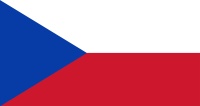Denizens of the undergrowth
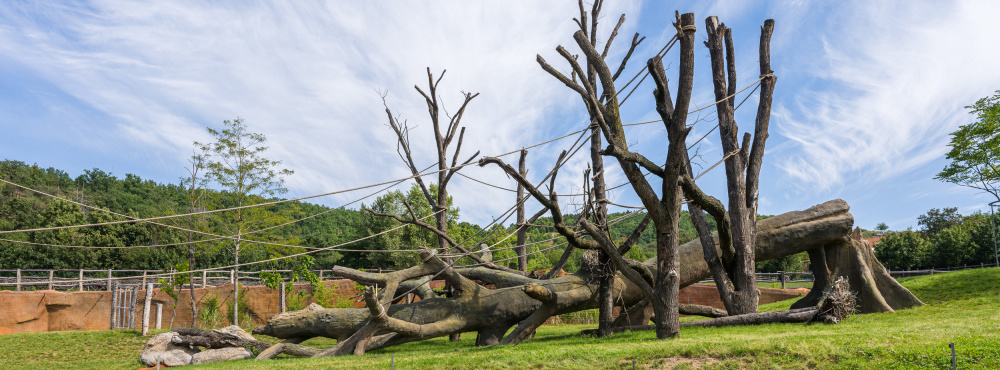
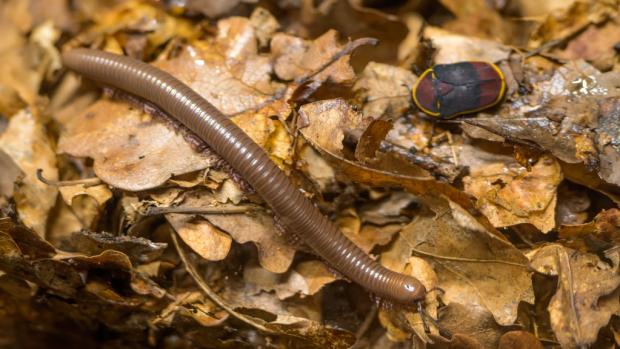
At the top of the auditorium, opposite the gorilla family exhibit, don’t miss the two vivaria that showcase life in the forest undergrowth. One is home to golden orb-weavers, while the other houses a diverse mix of species that inhabit this environment.
Tropical rainforests have several layers of vegetation. In the lowest layer exists a vibrant “microcosm” of animals without which the rainforest could not function. These include invertebrates, amphibians, reptiles, and many other creatures.
Invertebrates
Invertebrates are by far the most numerous and diverse group of animals in tropical rainforests. Their world is full of complex interspecies relationships, and their role in the rainforest ecosystem is utterly irreplaceable. Many invertebrates contribute to the breakdown of dead plant material and animal remains. Thanks to these understorey organisms (as well as fungi and bacteria), all this organic “waste” is rapidly decomposed, returning vital nutrients to the soil. This process also benefits the forest’s towering trees, which could not otherwise grow in the poor soils found here.
Red-legged golden orb-weaver spider (Trichonephila inaurata)
This large orb-weaver spider displays striking sexual dimorphism: the female’s body can grow up to four centimetres long, with a leg span of up to ten centimetres. The males are tiny by comparison, with a leg span of no more than three centimetres, and live in the female’s web, feeding on her catch.
Golden orb-weavers spin vertical webs that can span up to one and a half metres across. The silk they produce is exceptionally strong, and their webs can even entrap small birds. Thanks to its remarkable mechanical strength and flexibility, golden orb-weaver silk is the subject of research into new, robust materials with potential uses in a range of technological fields.

Photo: Petr Hamerník, Prague Zoo
Giant spiny assassin bug (Psytalla horrida)
One of the largest species of assassin bugs, reaching up to four centimetres in length, this formidable predator is found in the rainforests of the Gulf of Guinea and the Congo Basin. It feeds exclusively on live invertebrates, which it seizes with a swift strike of its front legs and its sharp, piercing–sucking mouthparts.
These black hunters are marked by warning red patterns on their thorax and wings and have conspicuous spines along their bodies. Both adults and nymphs tend to congregate at the base of tree trunks, venturing out mainly after dark to hunt.
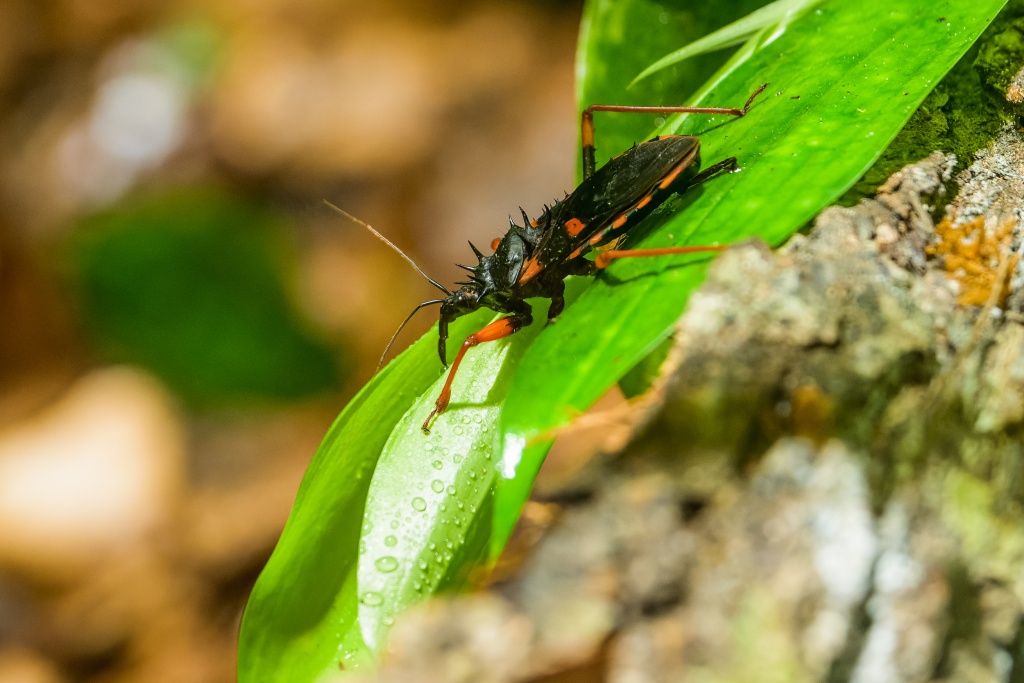
Photo: Petr Hamerník, Prague Zoo
Giant African olive millipede (Telodeinopus autii)
Millipedes are herbivorous relatives of centipedes. Unlike centipedes, they have a rounded body cross-section, and their legs are located on the underside of each segment—two pairs per segment. They spend most of the day burrowed in the substrate or hidden away in dark crevices, becoming active only at night. However, they are also good climbers and can readily ascend rocks, logs, or slanted trunks. They have a tough, hardened outer shell, and when threatened, they can curl up into a tight spiral, making them difficult to grasp due to their smooth, rigid exoskeleton.
Flower chafers
These medium- to large-sized beetles play different ecological roles at various life stages. The larval stages, called white grubs, live in rotting wood or decaying leaf litter, where they feed on organic material. Adults feed on fruit, tree sap, and flower nectar and are thus important pollinators. One of the unique features of flower chafers is their wing covers (elytra): unlike other beetles, they do not open them during flight. Instead, they slip their membranous hindwings out from beneath the closed elytra.
The species composition in the vivaria changes throughout the year, as some species have a long life cycle (egg, larva, pupa), and the adults (imagoes) only appear seasonally. For this reason, some species can only be seen at particular times of the year. The species you may encounter include the sun beetle, several species of fruit chafers and the Goliath beetle.
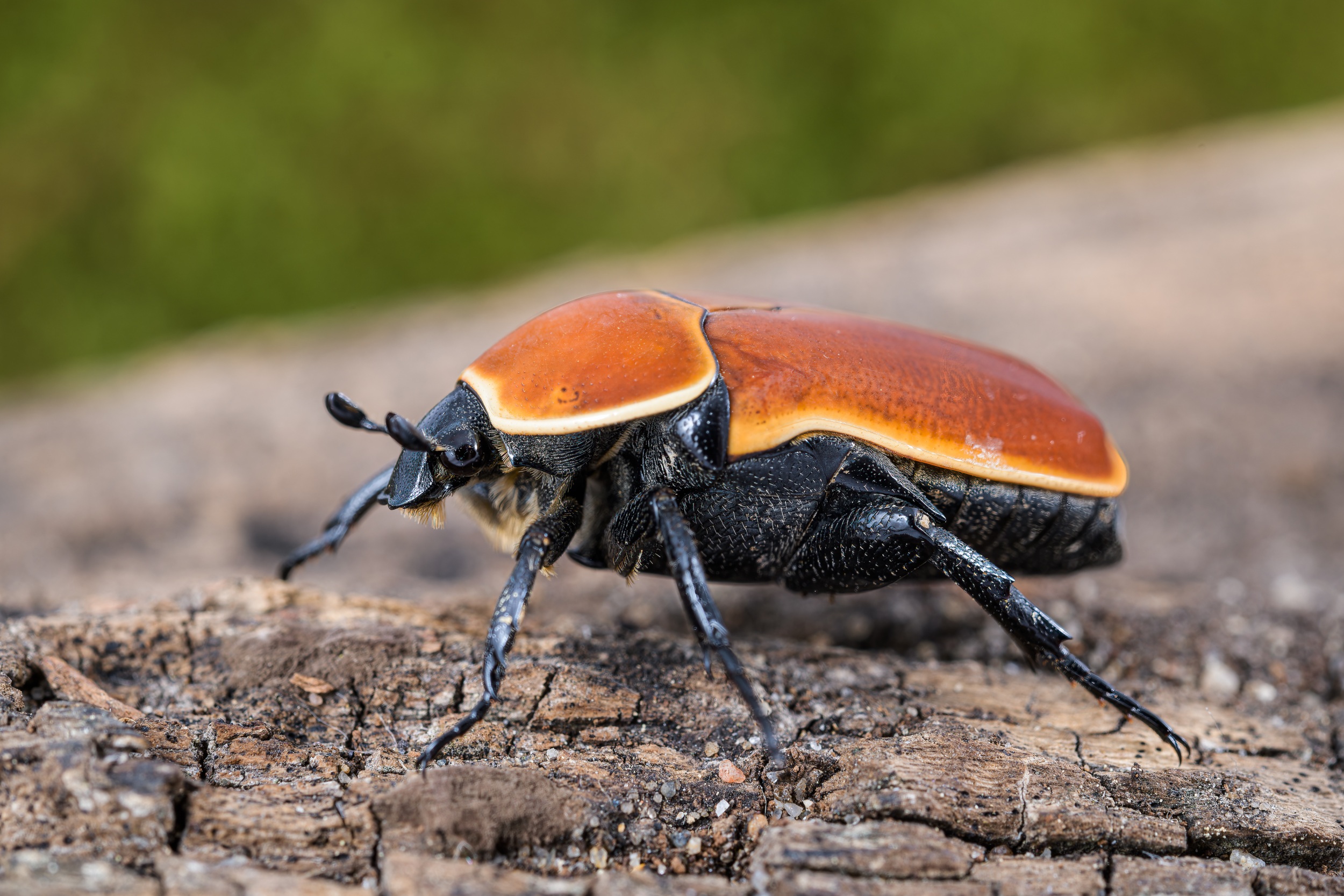
Sun beetle (Pachnoda marginata aurantia). Photo: Petr Hamerník, Prague Zoo
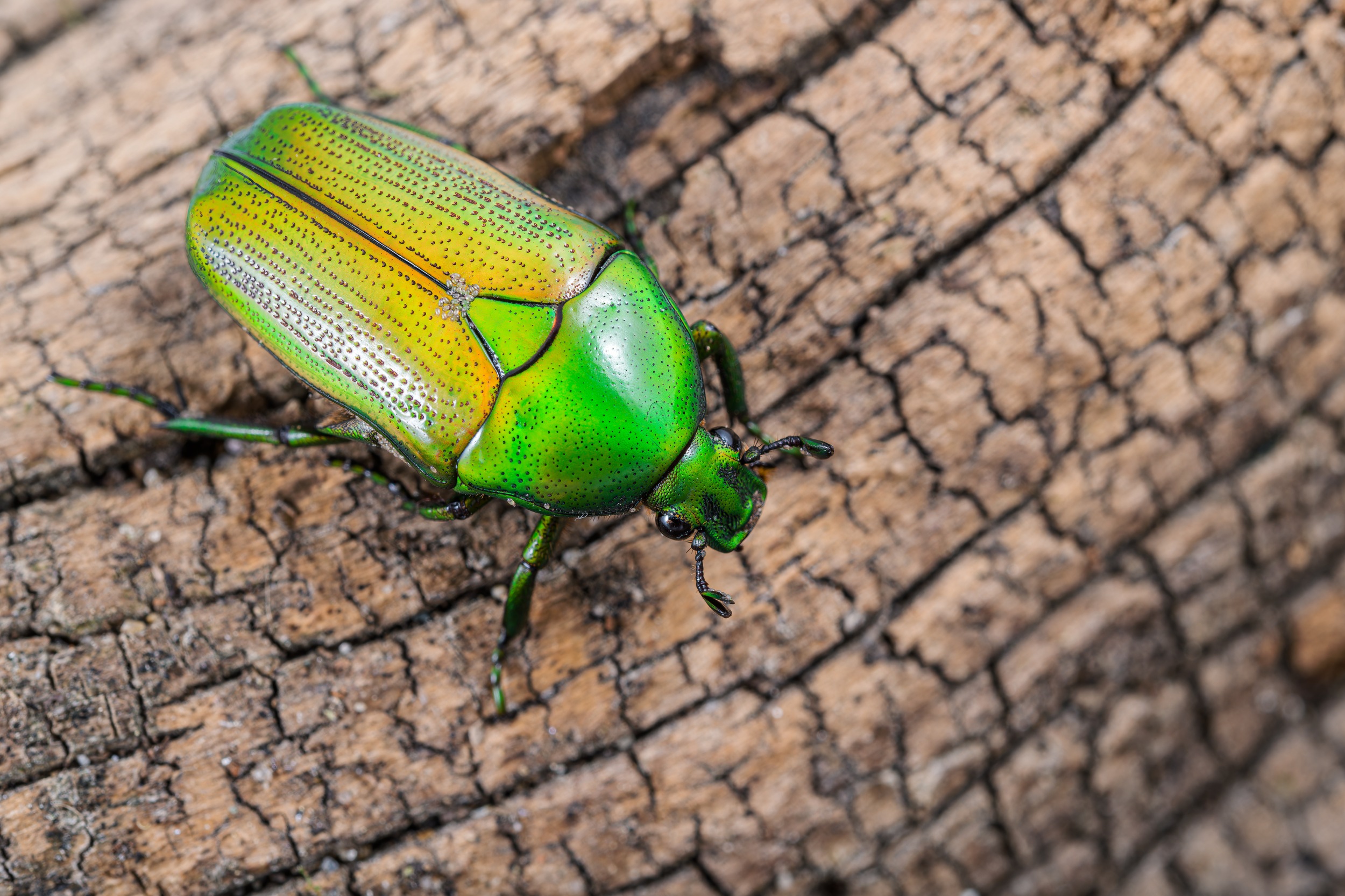
Chlorocala africana camerunica. Photo: Petr Hamerník, Prague Zoo
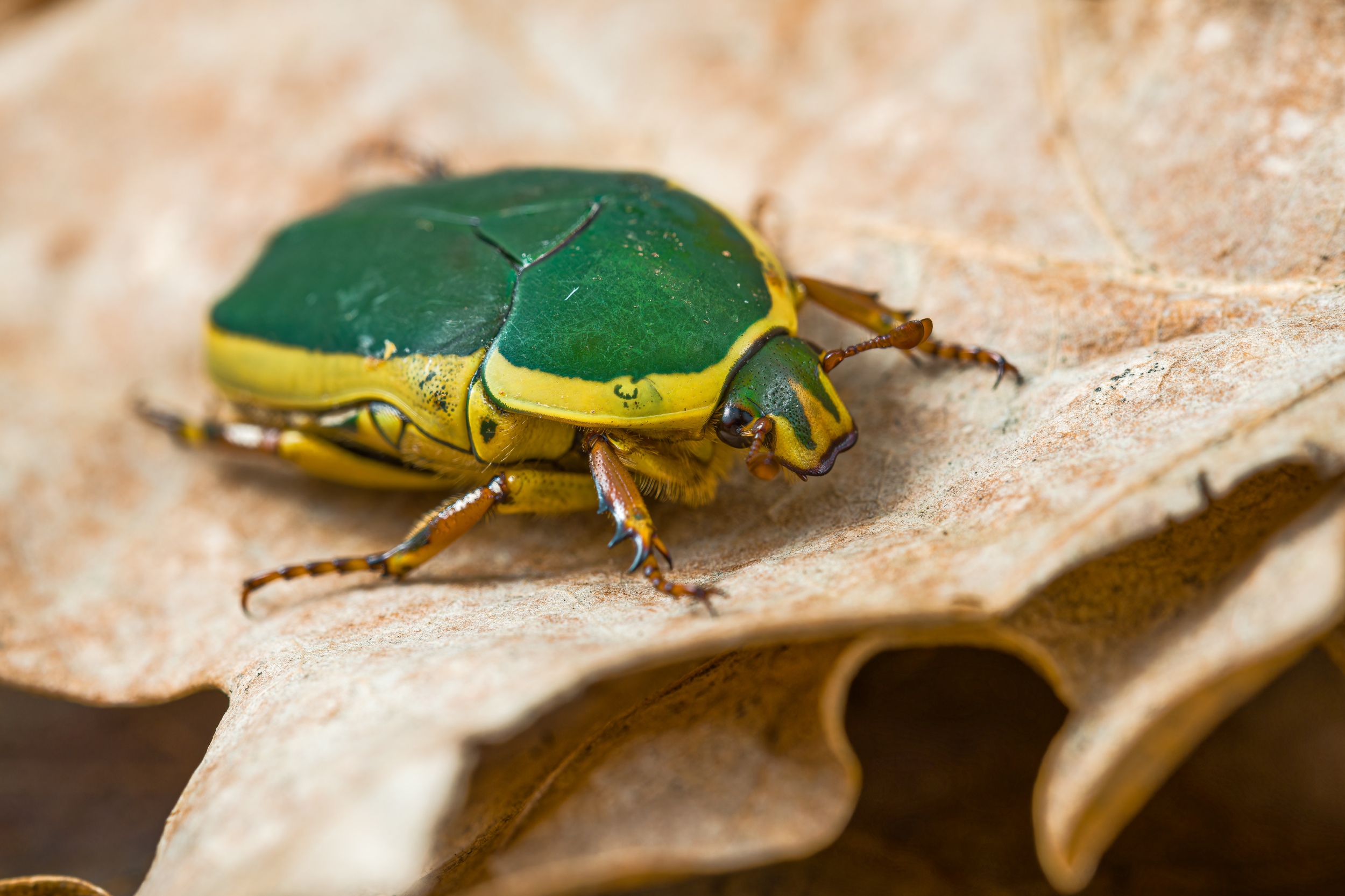
Pachnoda vossi. Photo: Petr Hamerník, Prague Zoo
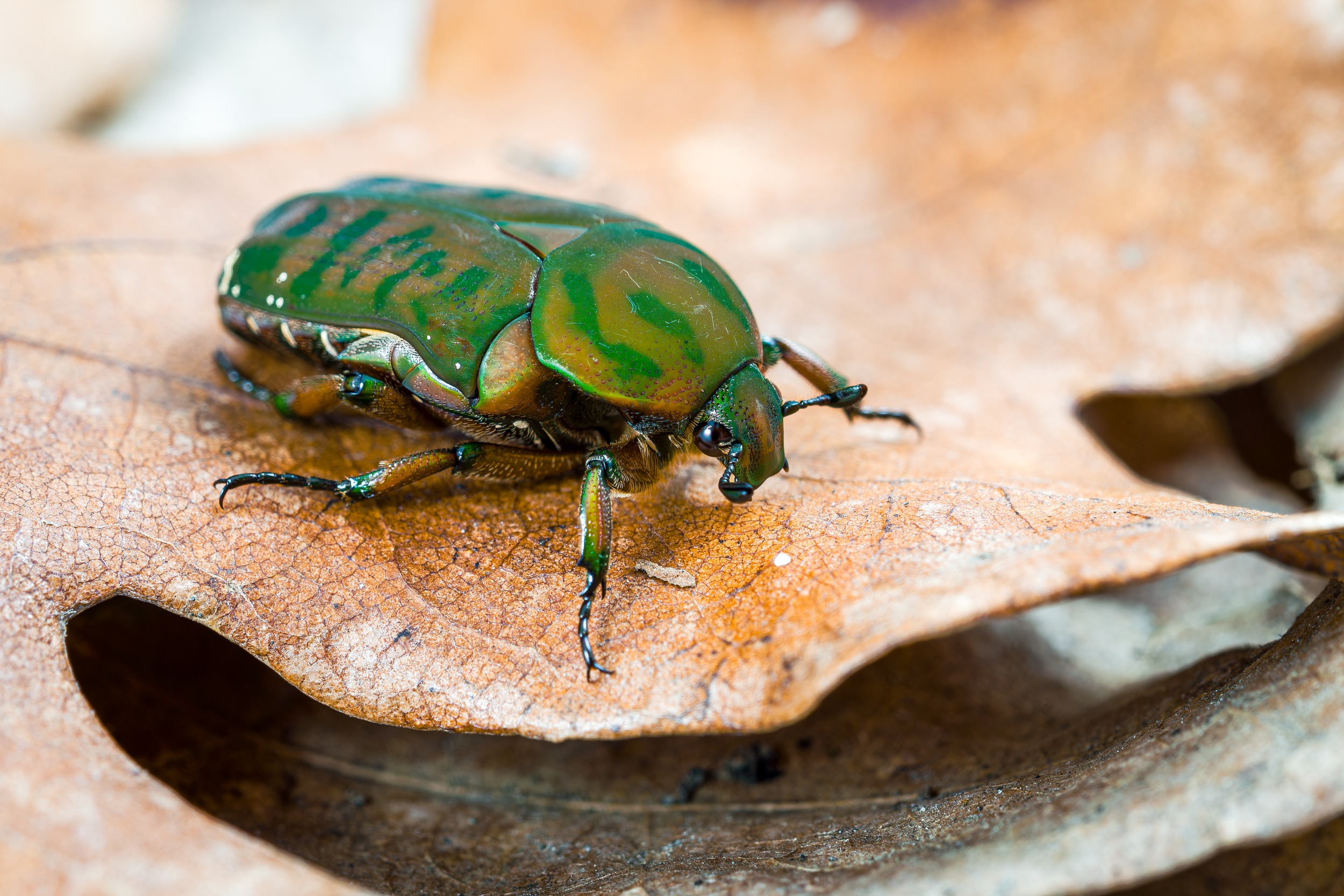
Anelaphinis breviceps. Photo: Petr Hamerník, Prague Zoo
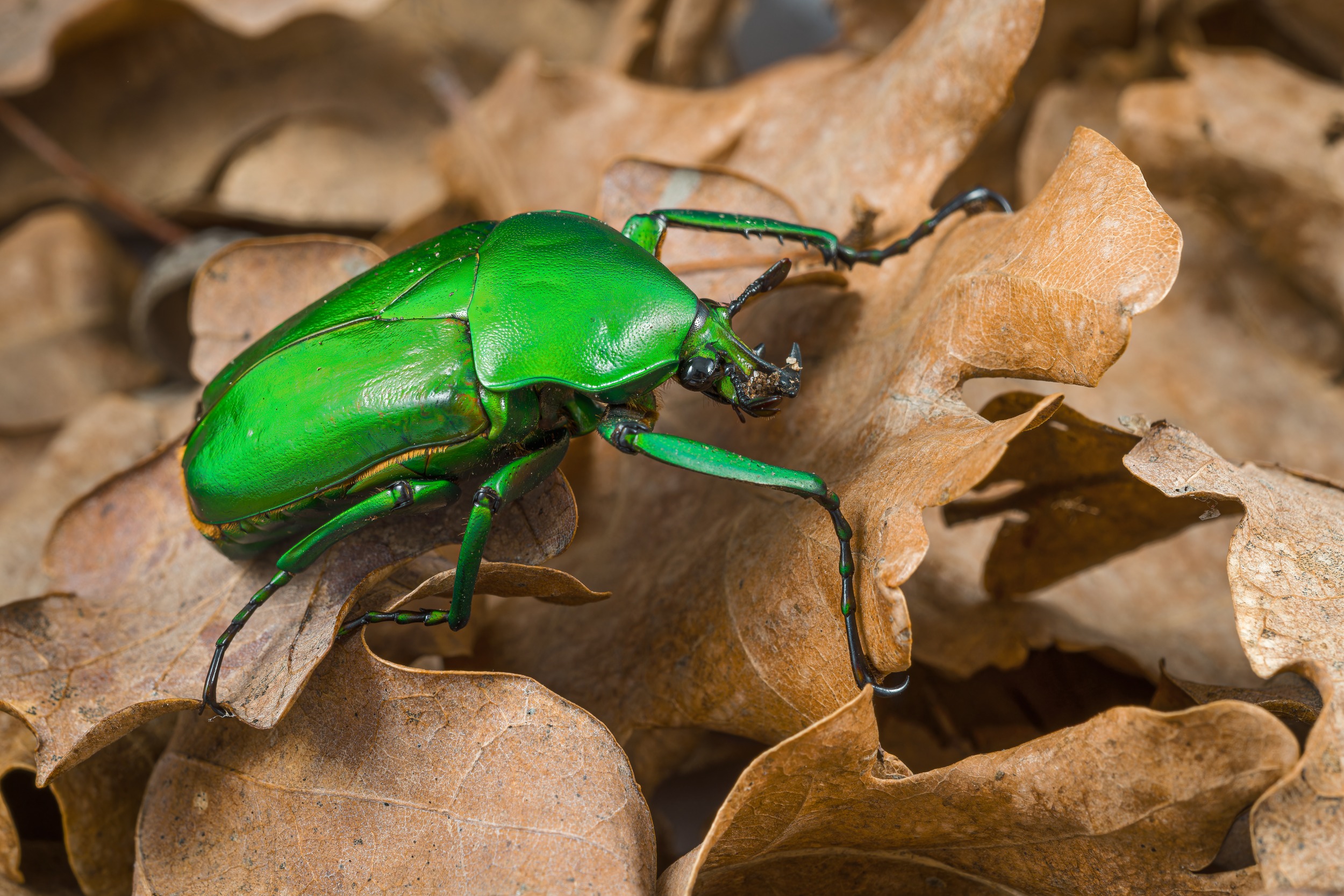
Dicronorhina micans. Photo: Petr Hamerník, Prague Zoo
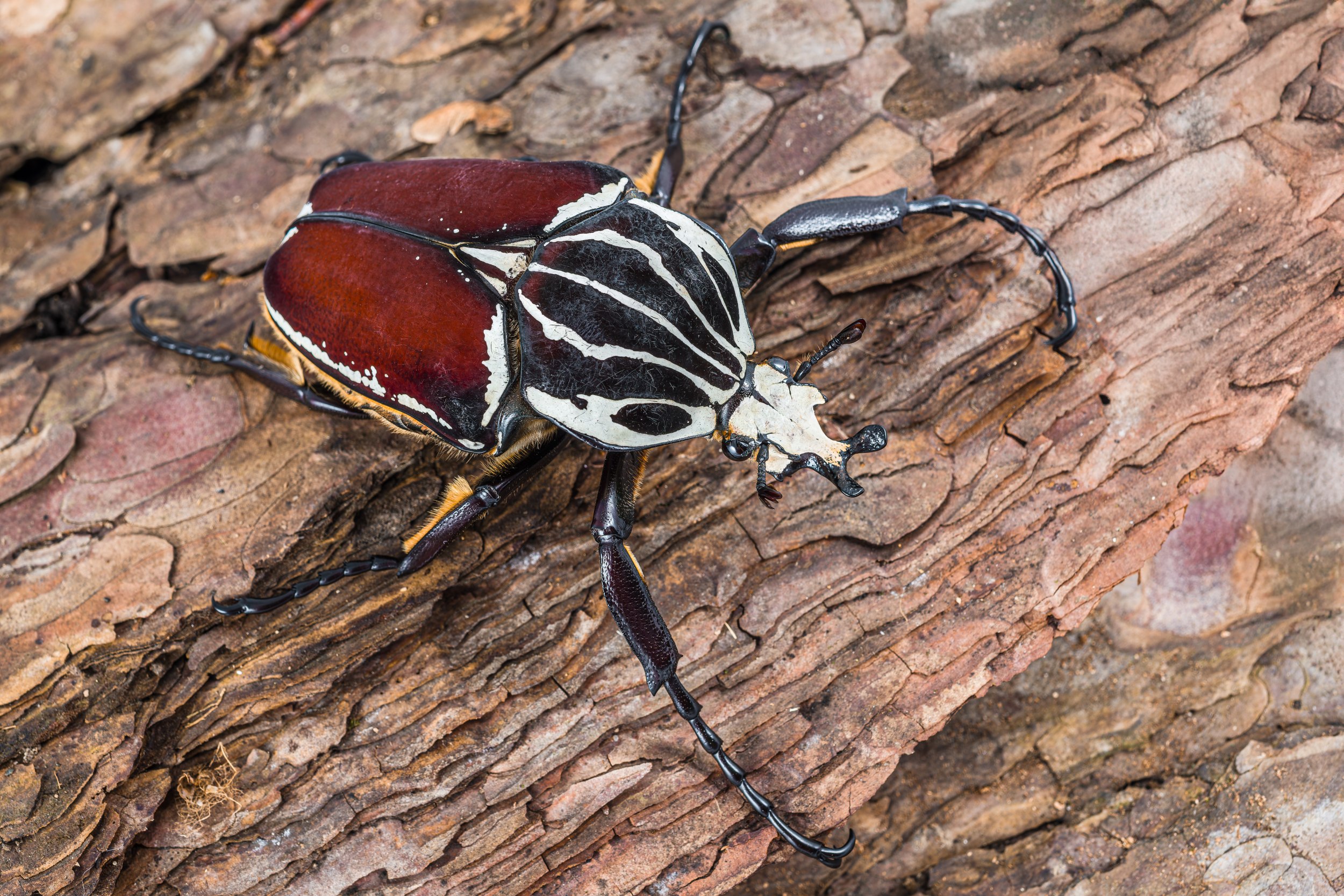
Goliath beetle (Goliathus goliatus). Photo: Petr Hamerník, Prague Zoo
Other inhabitants of the undergrowth
Brown banana frog (Afrixalus dorsalis)
This tiny brownish-orange frog from the sedge frog family (Hyperoliidae) is found in countries around the Gulf of Guinea. Its natural habitat is shrubs and the herb layer at forest edges, where it rests on the underside of leaves during the day.
At the start of the rainy season, males attract females with a call that resembles the chirping of crickets. Eggs are laid in clusters on vegetation overhanging water (such as forest pools and quiet sections of streams), and the tadpoles drop into the water after hatching. This strategy prevents the eggs from being eaten by aquatic invertebrates and fish.
Although wild populations are generally stable or increasing, the brown banana frog is also threatened by the loss of its natural habitat.
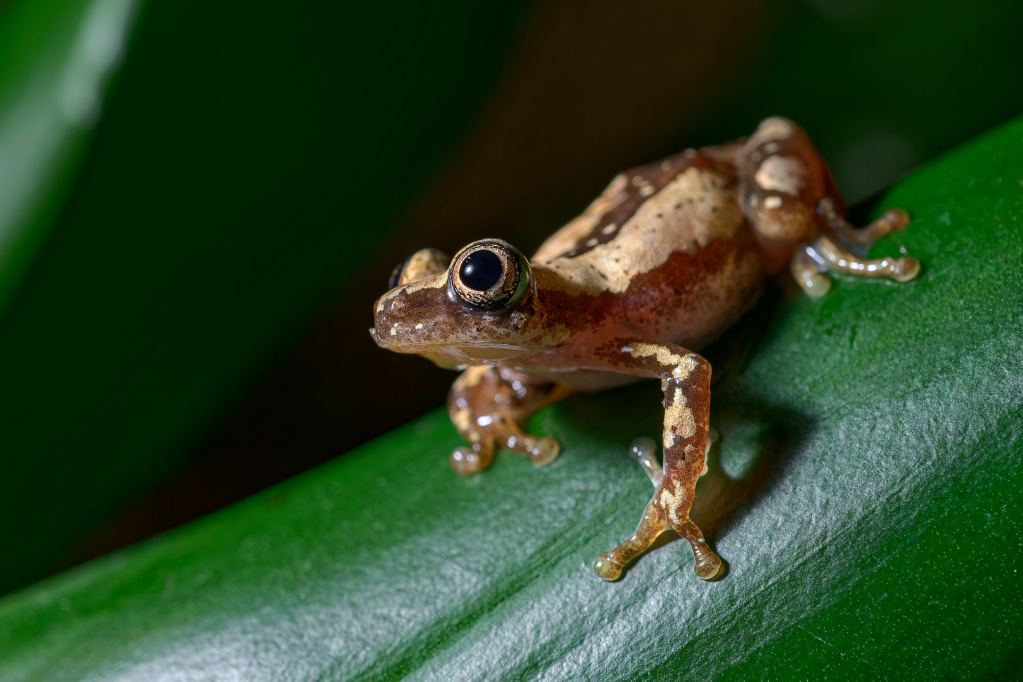
Brown banana frog. Photo: Petr Hamerník, Prague Zoo
Forest hinge-back tortoise (Kinixys erosa)
The carapace of this tortoise (the upper part of the shell) has a flexible hinge across the pelvic region, allowing it to close the back of its shell and shield its hind legs. It lives in the undergrowth of the central African rainforests, where it feeds mainly on fungi, but also supplements its diet with plant matter (fruit and soft parts of plants) and small animals (insects, earthworms, snails, millipedes, etc.).
Although its exact population size in the wild is not well documented, numbers are likely declining rapidly. The species is threatened mainly by rainforest clearing and the bushmeat trade.
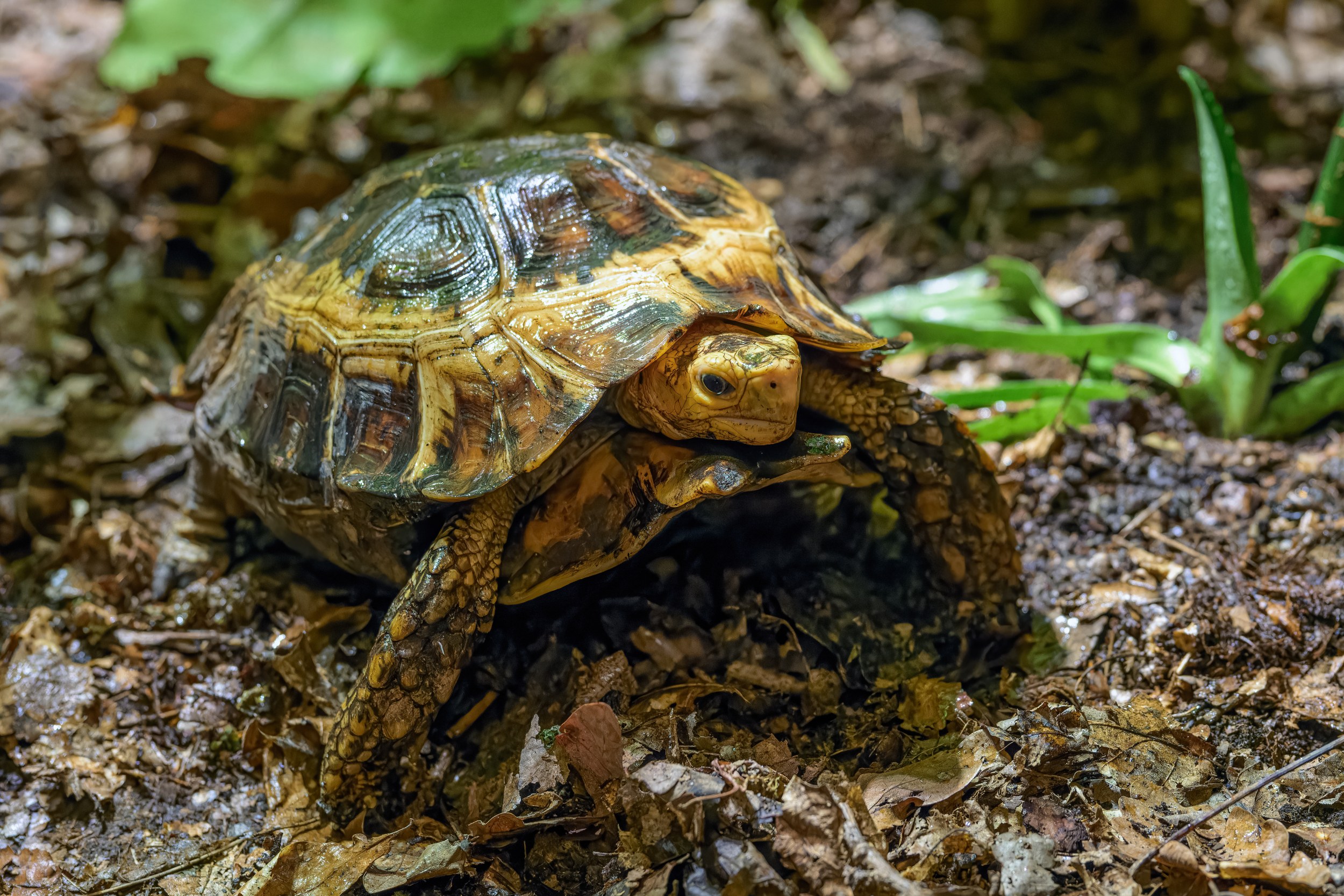
Forest hinge-back tortoise in a vivarium at the Dja Reserve. Photo: Petr Hamerník, Prague Zoo
ZOOPRAHA.CZ
Contacts
- The Prague zoological garden
U Trojskeho zamku 120/3
171 00 Praha 7
Phone.: (+420) 296 112 230 (public relations department)
e-mail: zoopraha@zoopraha.cz
Others



